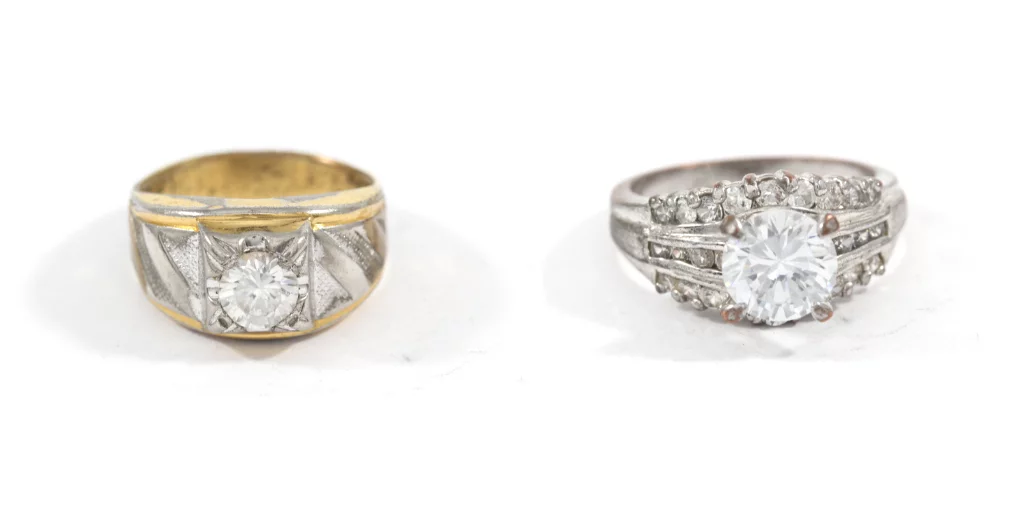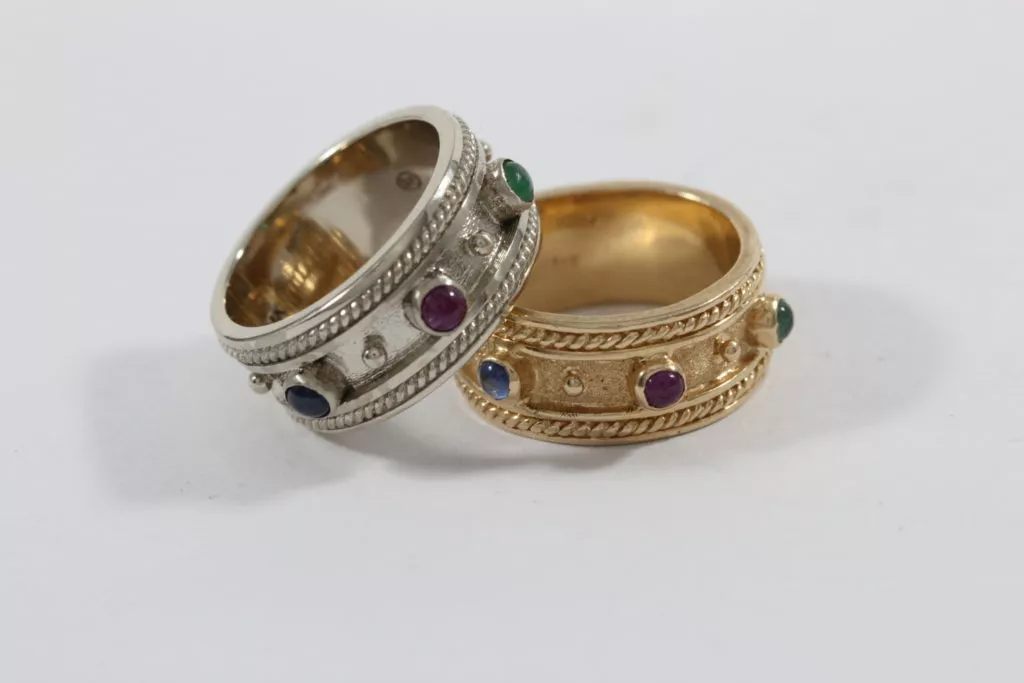You’ve had a piece of jewelry for the longest time- it’s not anything high quality, but you’ve literally loved it to death. Should you get it repaired? Even if it’s just costume jewelry, it has sentimental value. Here’s what we think about costume jewelry repair.
What is Costume Jewelry?
Costume jewelry can be loosely defined as any type of jewelry that’s relatively low-grade in terms of metal content and gemstones. Fine jewelry is made from gold, white gold/rose gold, platinum, and occasionally sterling silver. Costume jewelry is usually made from inexpensive metals, including silver, copper, brass, and pewter. These metals may be plated with gold to give it a “fine jewelry” look.
Gemstones set in fine jewelry tend to be either expensive, natural stones such as diamonds, sapphires, rubies, and emeralds. Costume jewelry contains cubic zirconia, plastic, glass, and even cheaper, semi-precious stones such as amethyst or rose quartz.
Repairing Costume Jewelry
Repairing costume jewelry can be quite difficult. Most jewelry repairs require soldering, or the process of mending two broken pieces together by heating up a metal alloy and using it as a glue. The following factors affect the repair:
- Metal Type: Since the metal composition of costume jewelry varies so wildly, it can be very difficult for the jeweler to figure out how to deal with the item. Metals have different heat points, and it’s frighteningly common for a piece of costume jewelry to melt when exposed to heat, especially with vintage pieces of unknown metal. The jeweler will usually “test” the item by touching a low-level heat source to one area of the piece. If it reacts badly, the jeweler will not consider soldering as a repair option.
- Metal Color: In addition to possible damage from heat, costume jewelry can be discolored during the repair process. This is especially common with items that are plated, since the layer over the base metal may be worn off while the item is being repaired.

This gold-tone pendant was originally also a pin; we removed the pin part, and replated the discolored area.
- Stones: Stones such as cubic zirconia or semi-precious natural gems like amethyst are fairly resilient and will withstand the repair process, even during soldering. However, plastic stones and glass stones can break or burn during repair. To prevent this, the jeweler often removes gems around the damaged area before soldering.
The Repairs:
While each case differs depending on the damage and the item, here’s a brief look at a few of the most common types of costume jewelry repairs we receive:
- Soldering: Whether it’s a broken chain, a loose post, or a wrecked pendant, inevitably we’ll get a piece of costume jewelry in for soldering. Most of the time, this repair is fairly simple, but if the item is plated, or contains a lot of stones and/or enamel, the jeweler will have to proceed more carefully.
- Gold plating: Re-plating items is an incredibly popular service, since most costume jewelry is plated and will show discoloration after years of loving wear. This repair can be quite expensive depending on the thickness of the gold and the type of gold requested by the customer.

Two rings before plating. The one on the left is a commercial alloy, while the one on the right is copper.
- Resizing: As with all rings, costume jewelry rings need to be resized once in a while. The process of sizing these rings may vary depending on the metal, and plated items will always need re-plating after the sizing process.
- Stone setting: Stones in costume jewelry are often set with glue, and they can easily fall out after a long period of time. Most jewelers will not be able to source plastic or glass gems as a replacement, but think on the bright side! The missing gems can be replaced with real jewels or lab-created stones.

A vintage garnet heart ring that had all of the side stones replaced with cubic zirconia.
The Cost- Is It Worth It?
The biggest question we get from our customers is; “Is it worth repairing my jewelry if it’s costume?” It’s a good question to ask- most of the time, we’ll say yes since many of these pieces have sentimental value to a customer.
When evaluating a costume jewelry repair, we usually go by the “rule of longevity.” Items such as necklaces and earrings do not experience a lot of daily wear, so getting them repaired with a quick soldering or re-plating is justifiable because the repair will last for a very long time. However, rings and bracelets are always on the hands and wrists, and this makes them more prone to damage. When dealing with these pieces, we offer our customers a second option; jewelry replication.
Jewelry replication is the process of taking an existing piece of jewelry and making a replica with high-quality materials. This upgrades the design from costume jewelry to fine jewelry, allowing you to keep the look of the original piece without all the hassle. For instance, a gold-plated ring can be remade in 14k yellow gold, which eliminates the need to get the ring re-plated every year. The process is costly, but it’s a great long-term investment since fine jewelry is comparatively more durable than costume jewelry.

A ring replication we did for our customer Jan. The original ring was yellow gold, while the duplication was intentionally cast in white gold, as requested.
The next time you have a piece of costume jewelry that needs fixing up, keep these facts in mind! Bling always comes with a cost, so spend your money wisely.
Ten articles before and after
What Are The Different Types of Engraving? | CHURINGA Jewelry Repairs
5 Historic Female Jewelry Designers You Should Know | CHURINGA Jewelry Repairs
Ring Resizing Alternatives | CHURINGA Jewelry Repairs
How to Untangle A Necklace | CHURINGA Jewelry Repairs
What Are the Types of Jewelry Finishes and Techniques? | CHURINGA Jewelry Repairs
Bracelet Repair: The Process | CHURINGA Jewelry Repairs
People Behind The Pieces: Carla's Antique Rhinestone Earrings | CHURINGA Jewelry Repairs
Jewelry Conversion: How To Use Old Jewelry To Make New Jewelry | CHURINGA Jewelry Repairs
Four Different Types of Gold Jewelry | CHURINGA Jewelry Repairs